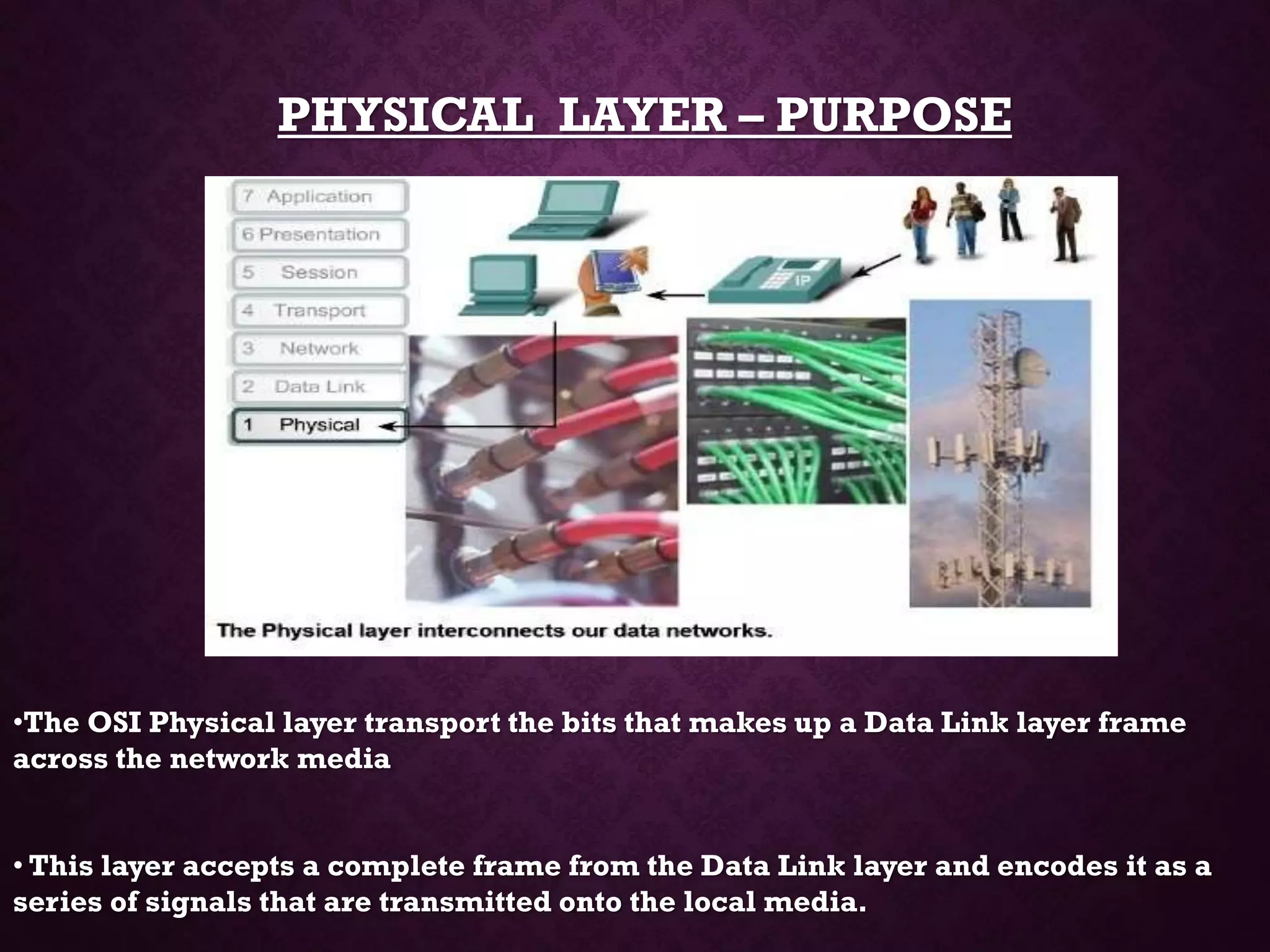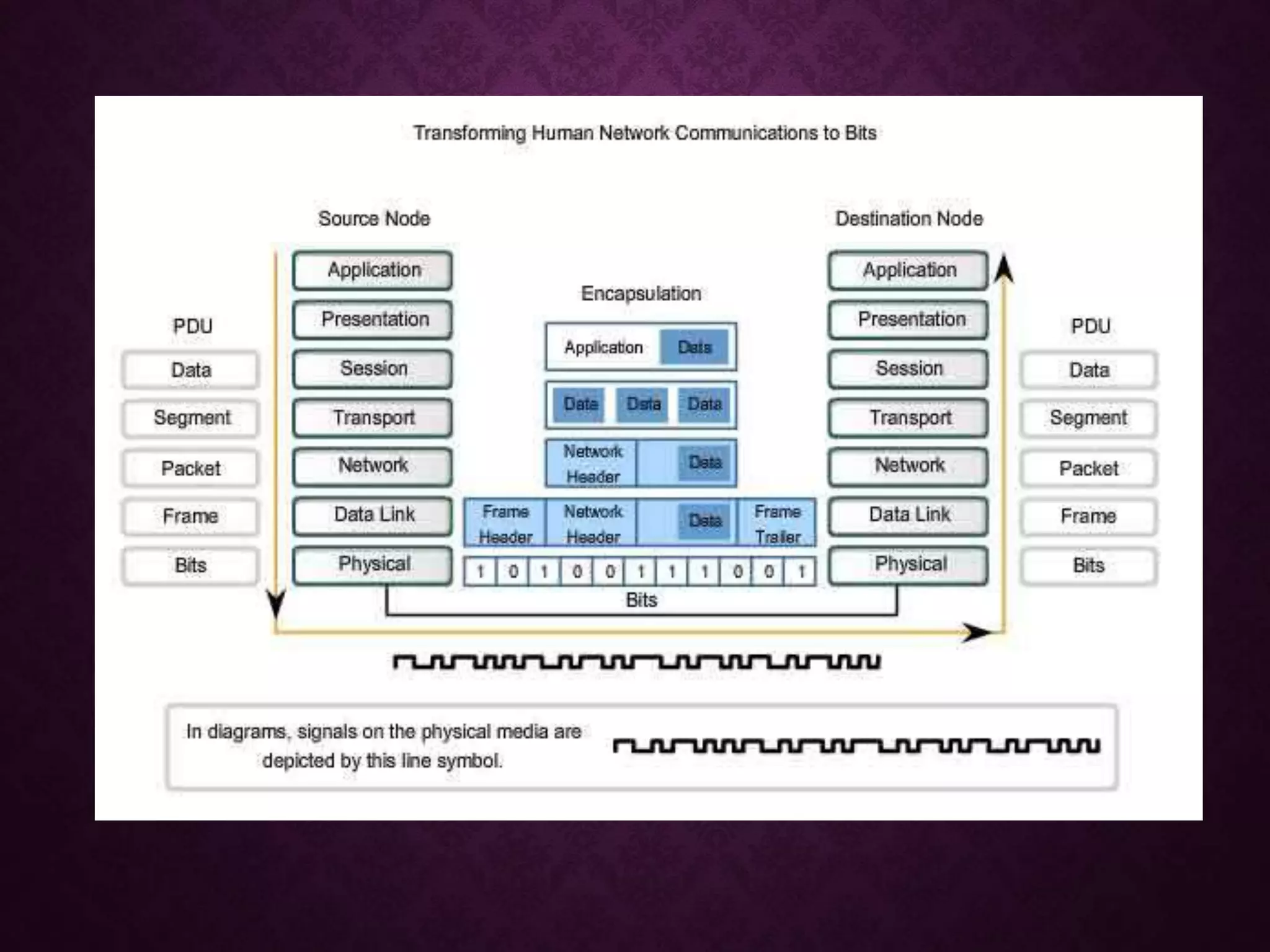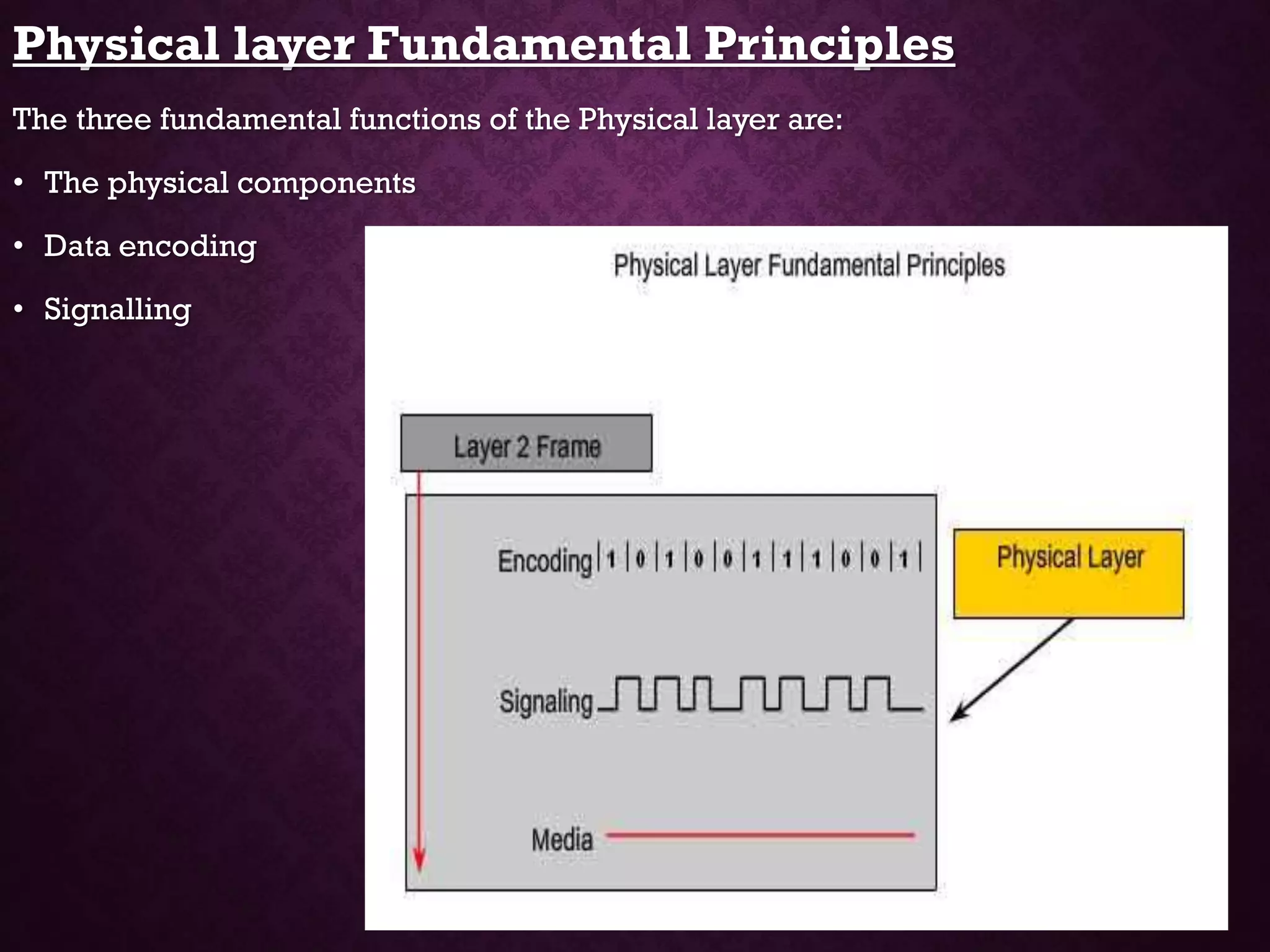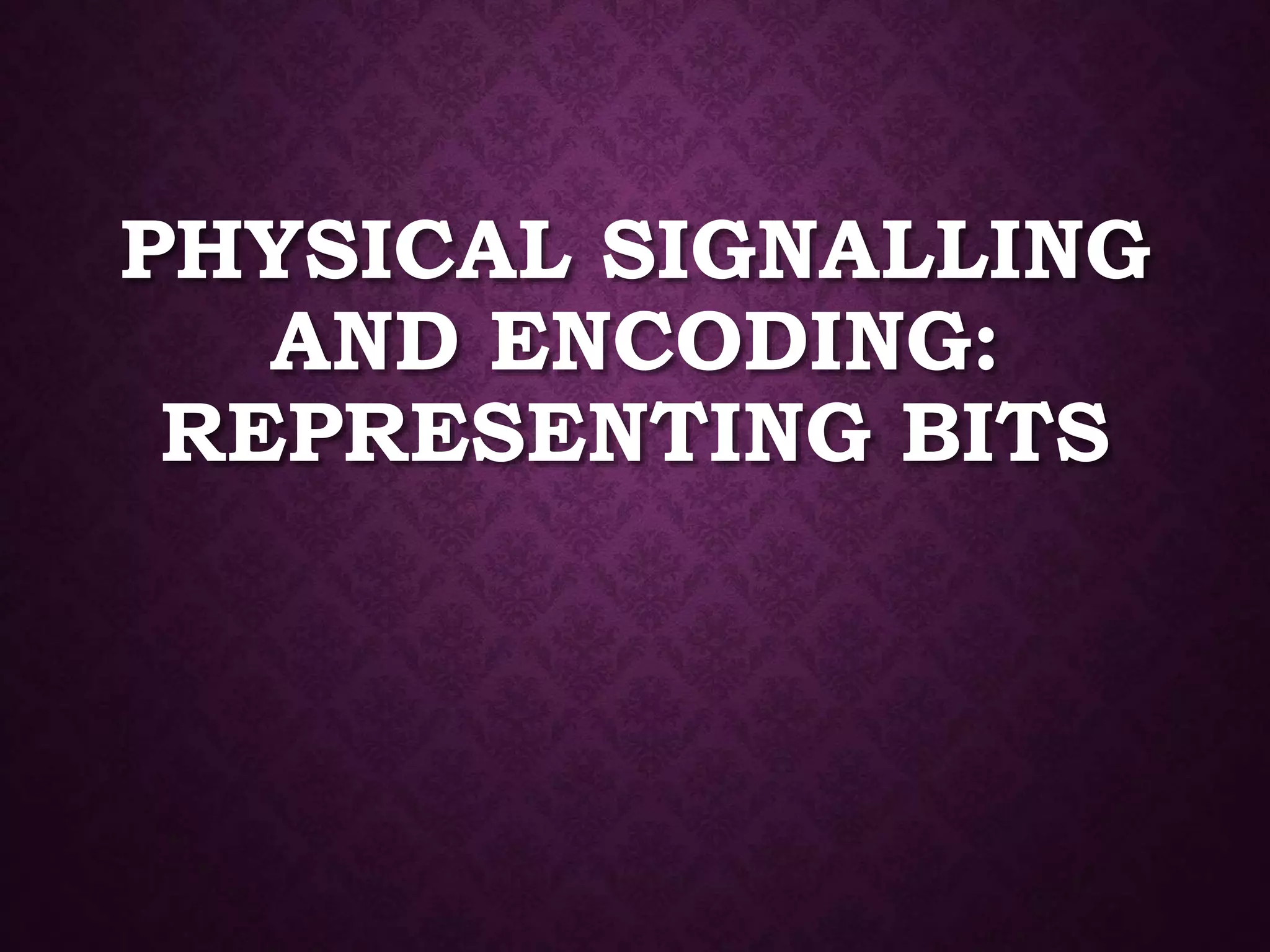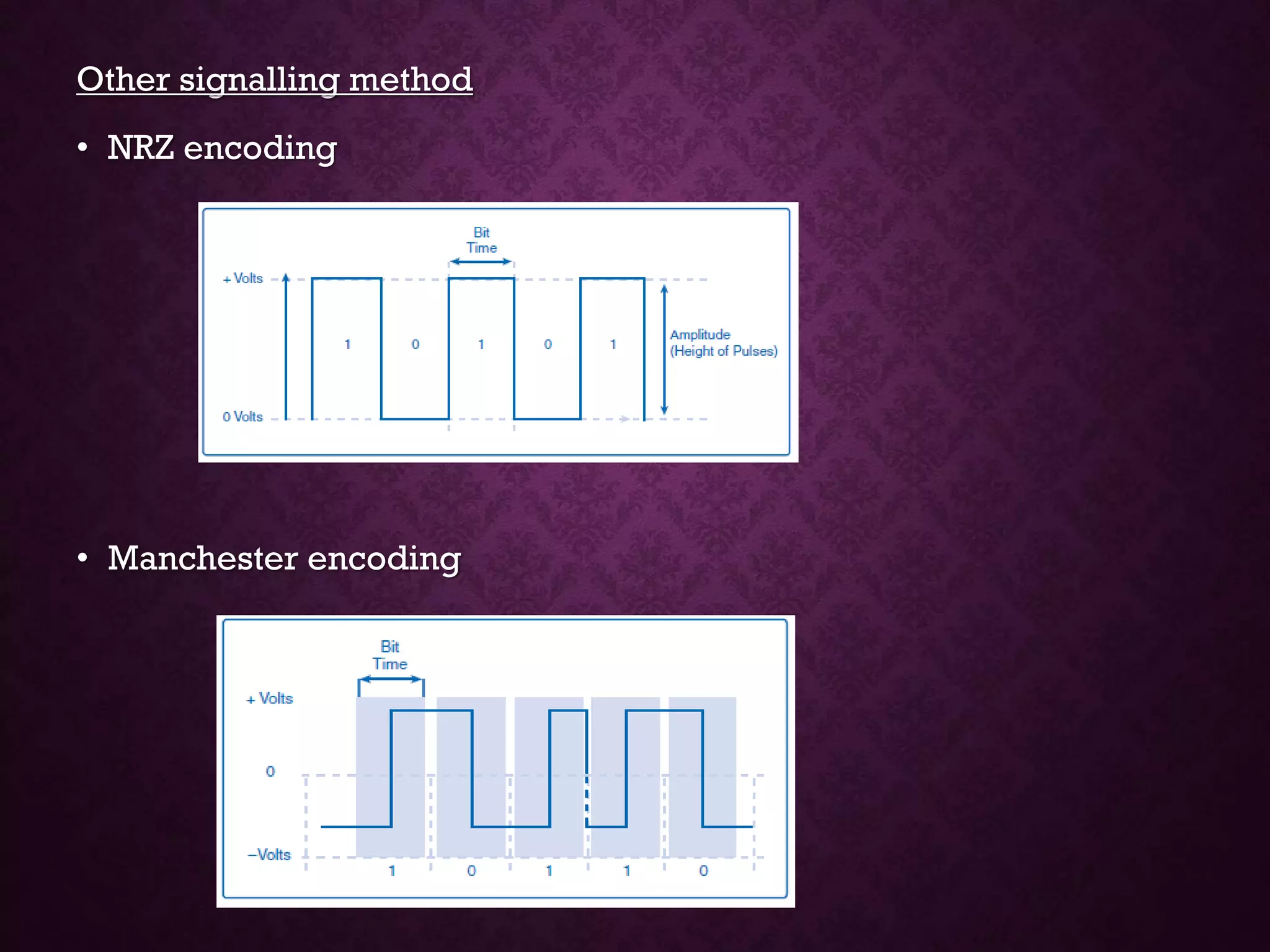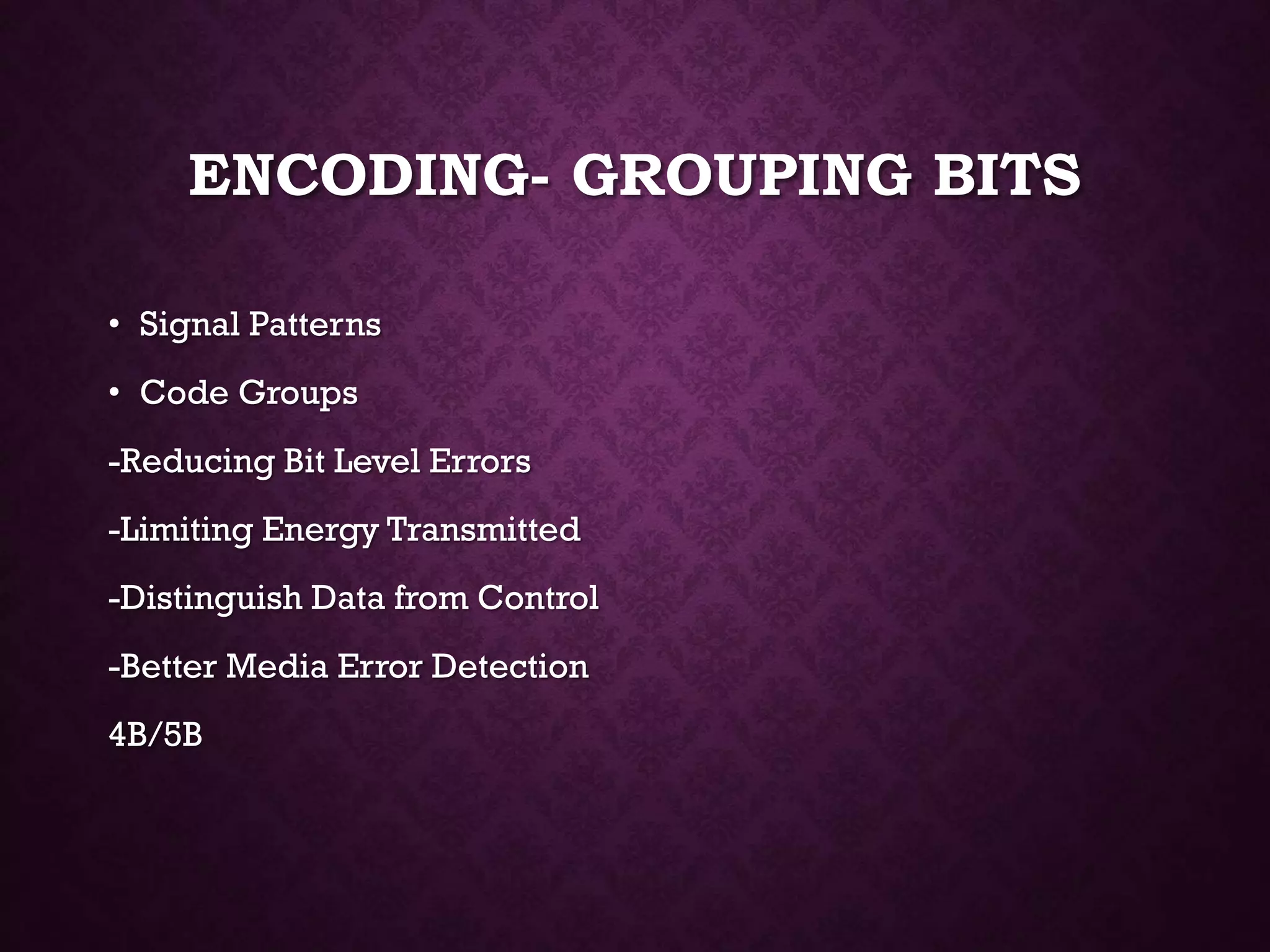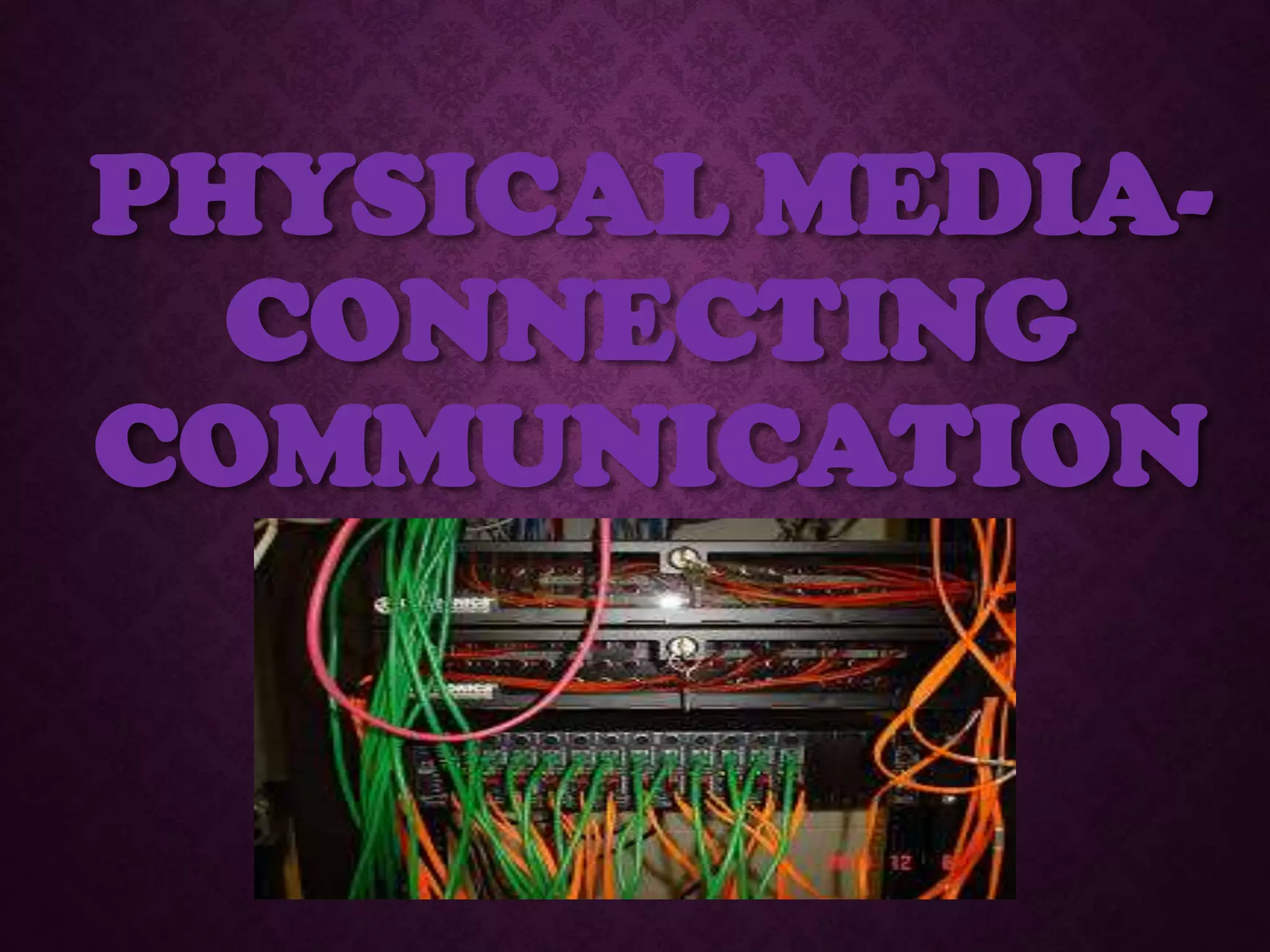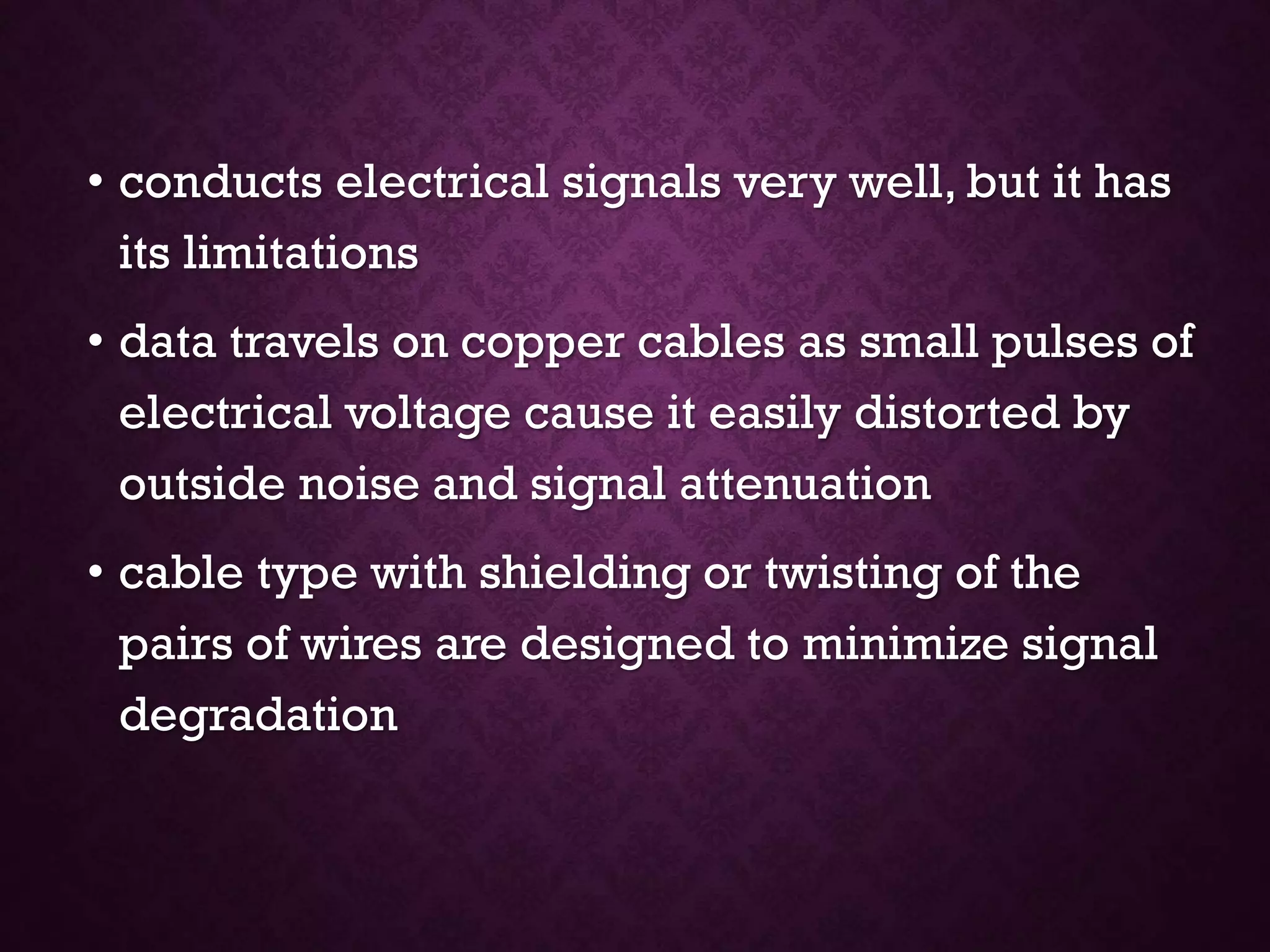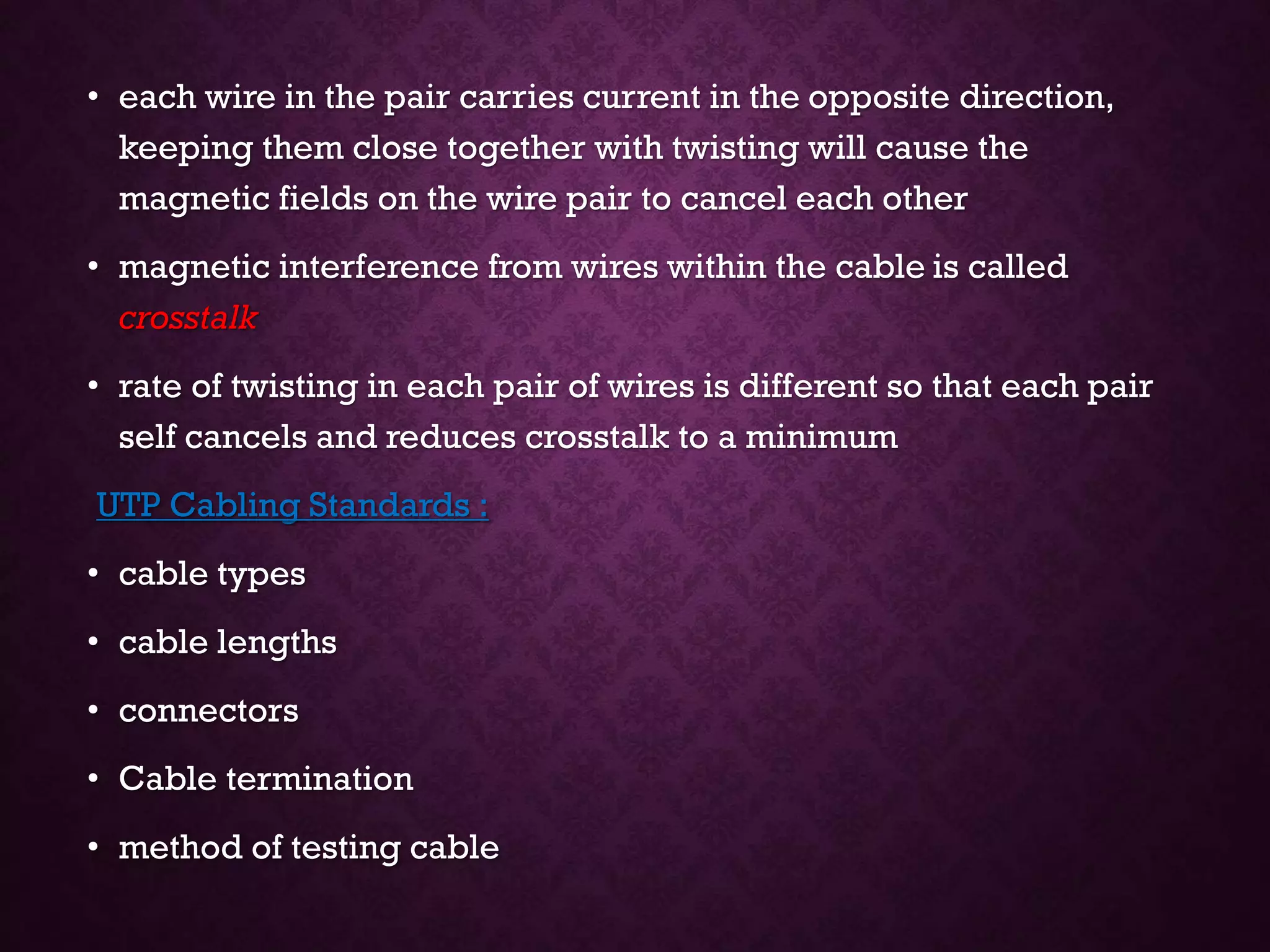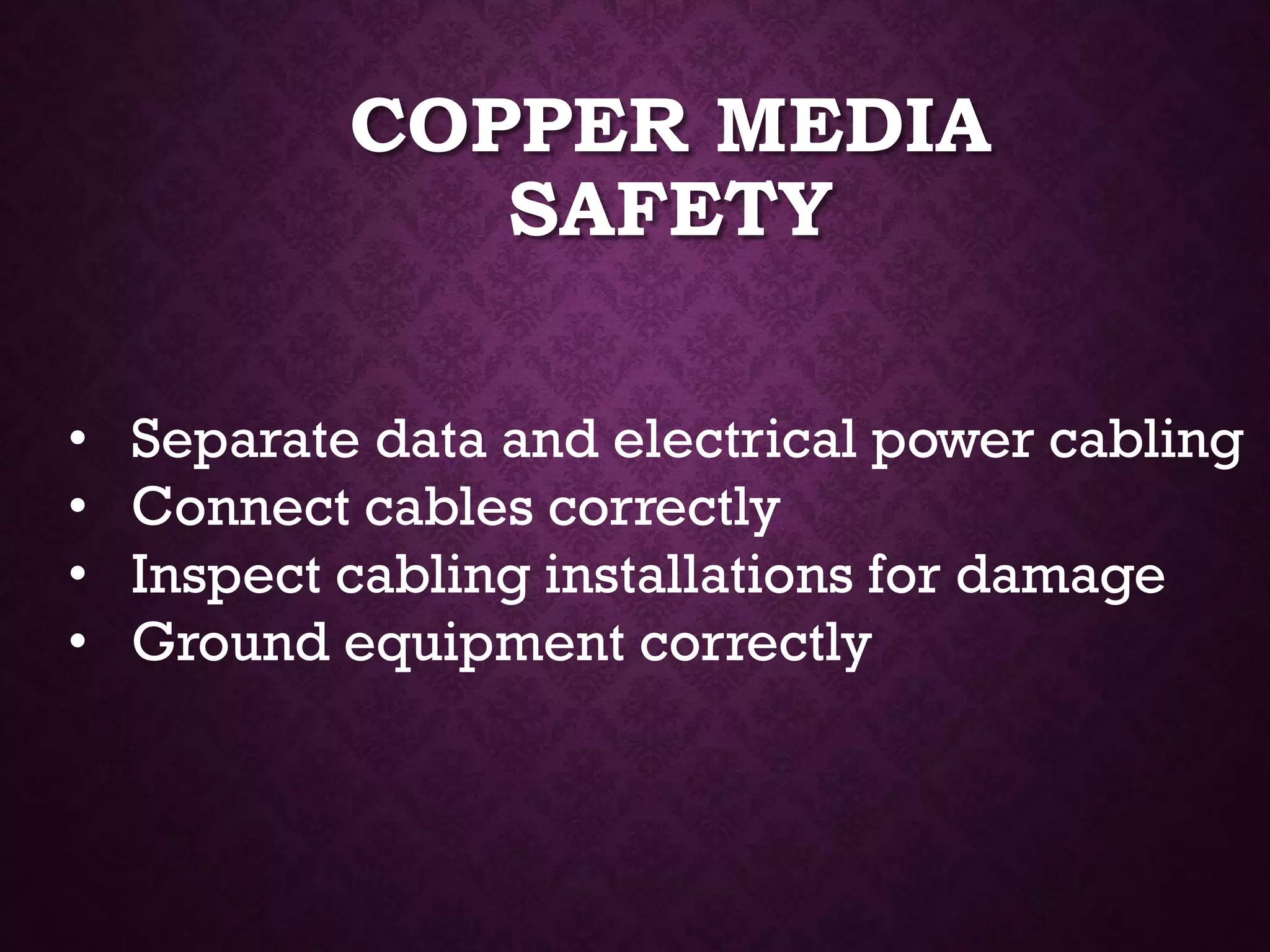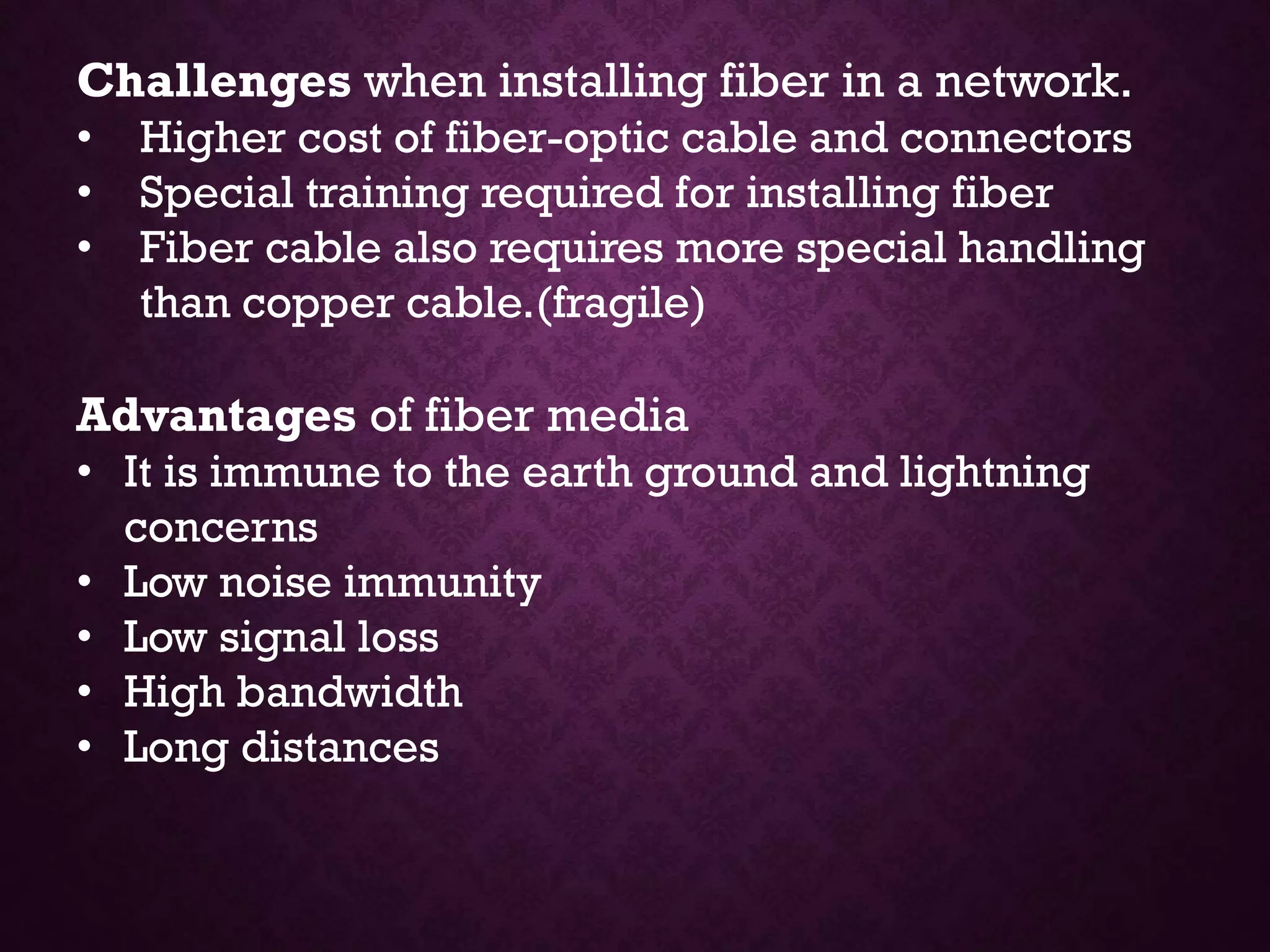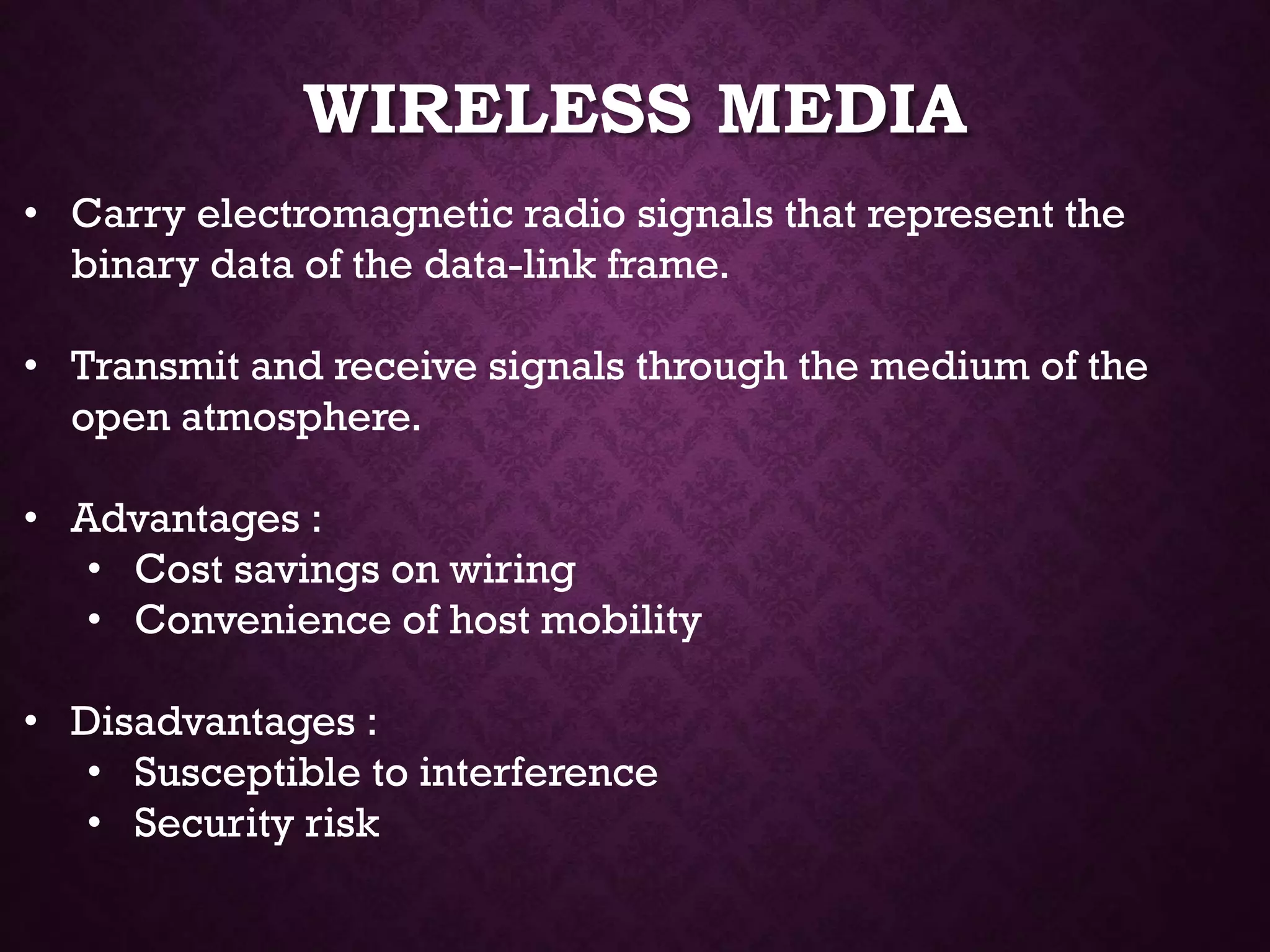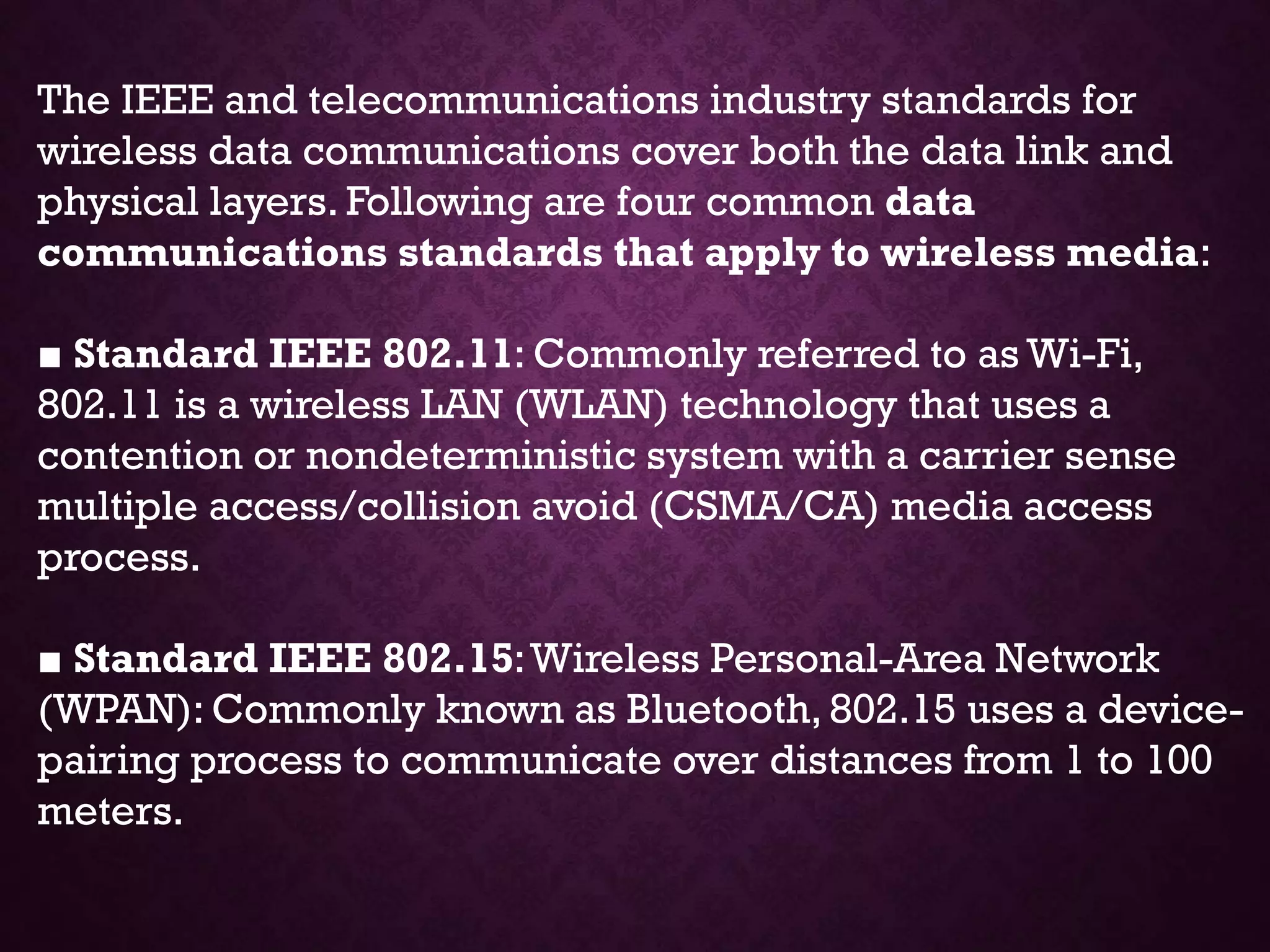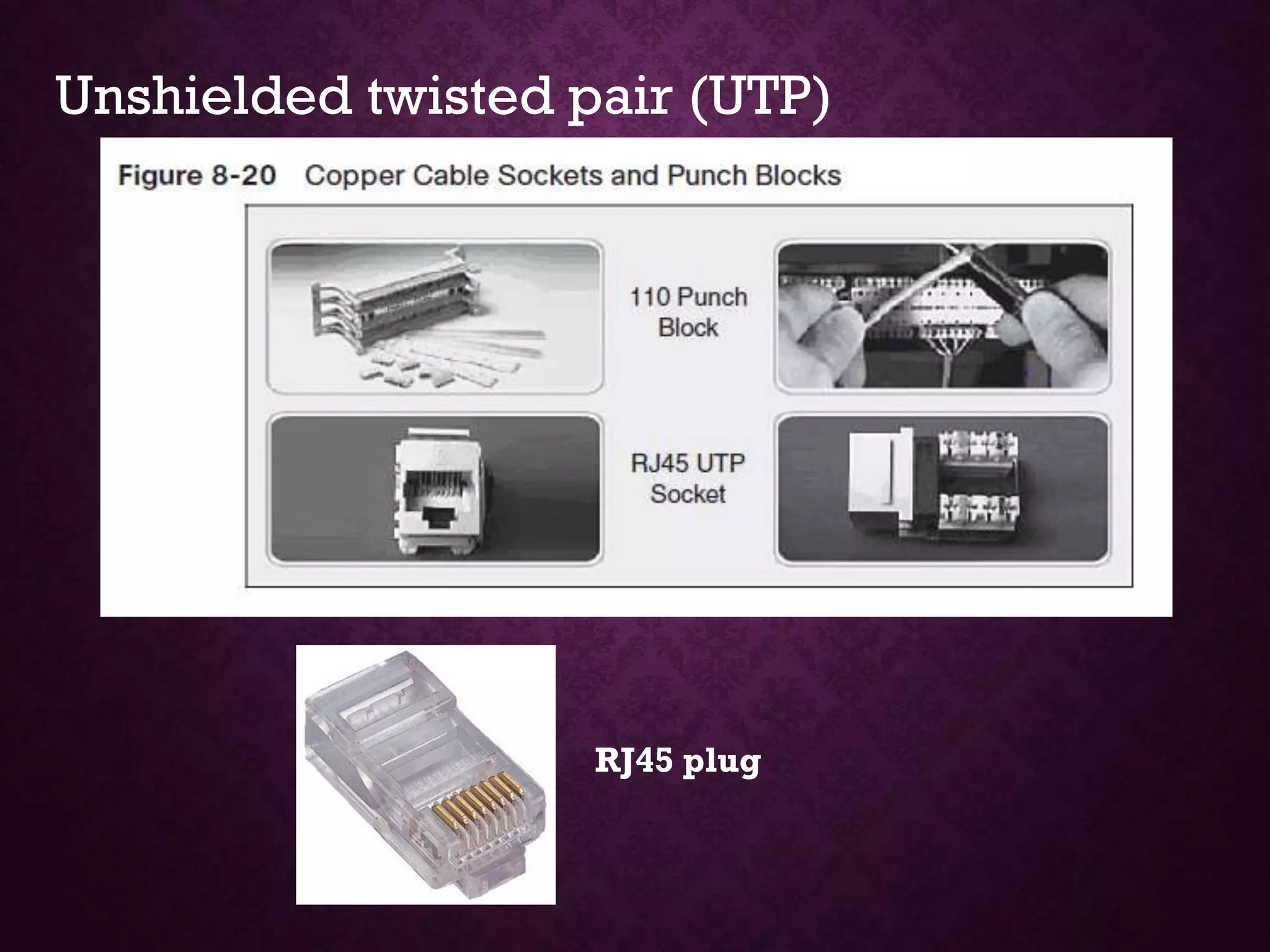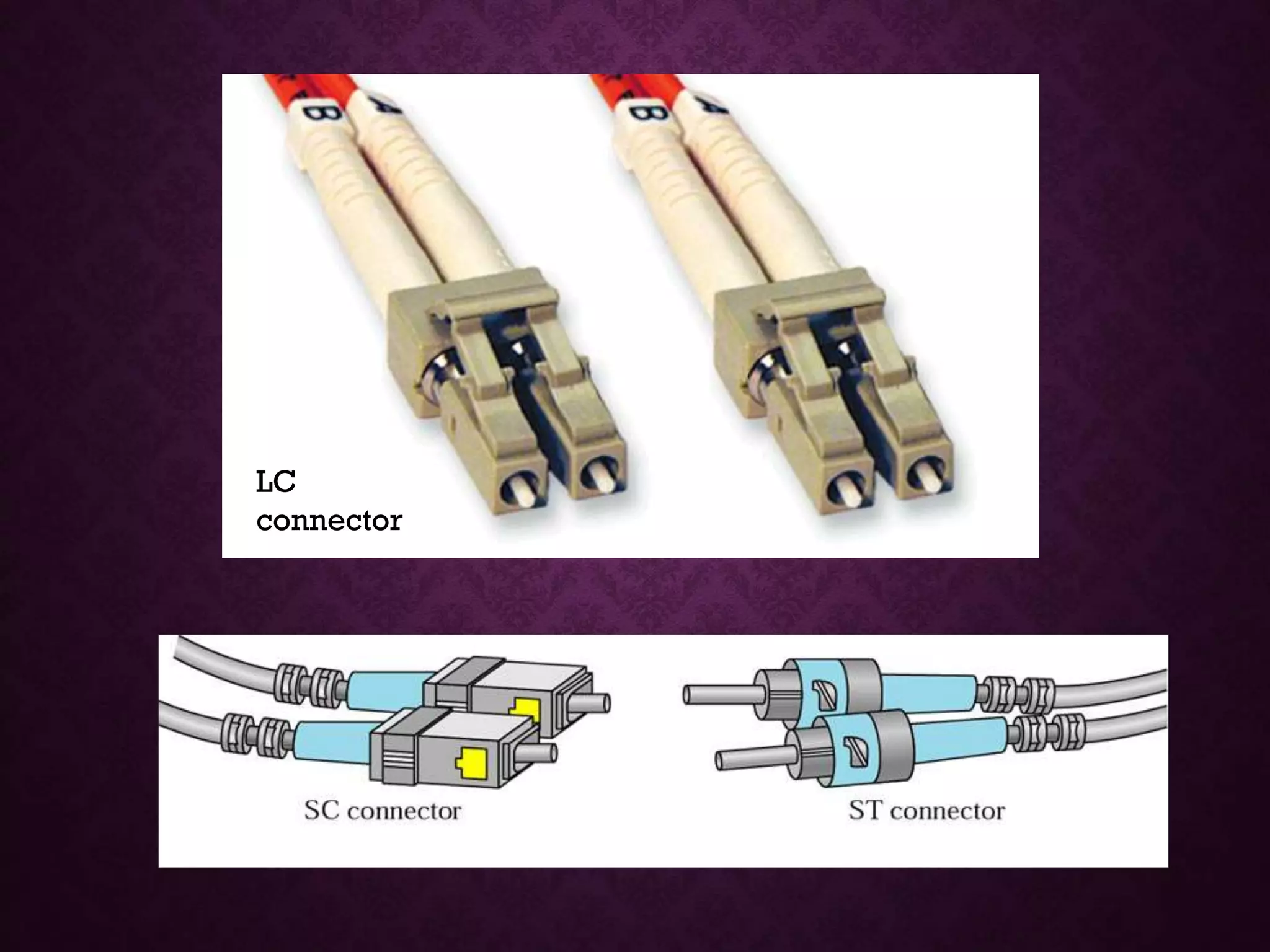The physical layer transports frames across network media by encoding the data as signals. It uses various media like copper cable, fiber, and wireless. For copper, standards define cable types and connectors like RJ45. Fiber uses glass strands to transmit light pulses. Wireless transmits radio signals. The physical layer represents data as electrical, light, or radio patterns and ensures reliable transmission by using encoding, signalling standards, and media access control. Hardware components include network adapters, cables, and connectors.

